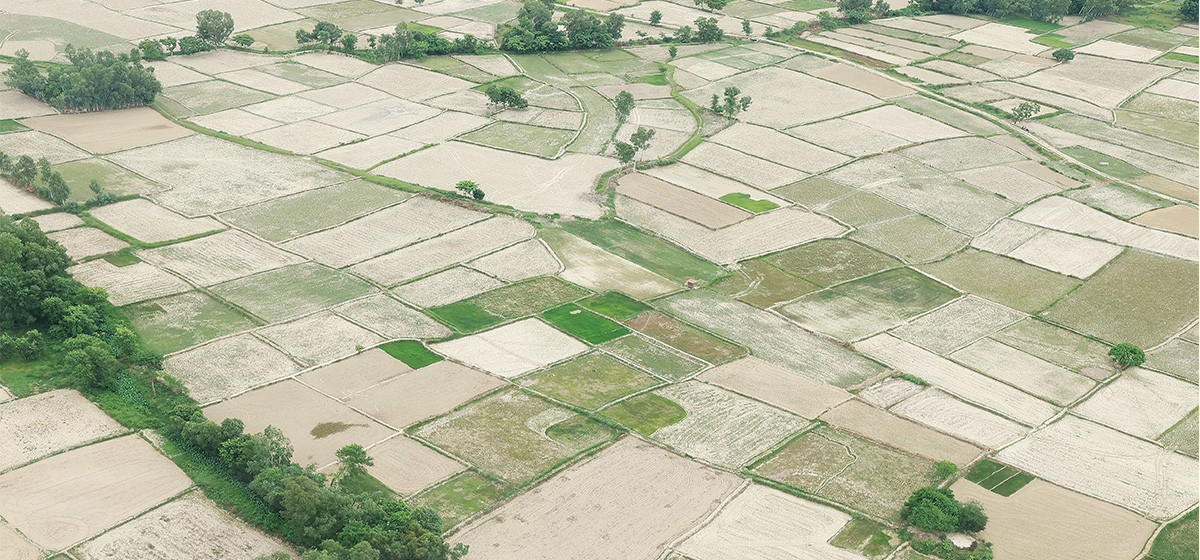KATHMANDU, July 27— A prolonged dry spell has pushed Madhesh Province to the brink of a food crisis, with only 51 percent of paddy fields planted so far—at a time when the season should be nearing completion. The lack of timely rainfall and absence of irrigation have left vast stretches of farmland barren, and even fields that have been planted are cracking under the scorching sun.
Paddy fields across key rice-producing districts—Sarlahi, Mahottari, Siraha, Dhanusha, and Saptari—remain largely untouched. “Of the 372,000 hectares suitable for rice cultivation in Madhesh, only 192,000 hectares have been planted,” said Prakash Kumar Sanjel, Director General at the Department of Agriculture. “Worse still, planted fields are developing deep cracks due to a lack of irrigation.”
The data tells a grim story: Sarlahi has managed 56% plantation, Mahottari 35%, Siraha 38%, Dhanusha 35%, and Saptari just 37%. Only Bāra and Parsa districts have reported satisfactory plantation rates, at 80% and 81% respectively.
Officials blame the crisis on multiple failures: the delay in monsoon, poorly maintained canals, dysfunctional deep tube wells and boring systems, and erratic electricity supply. “Without electricity, even existing borewells can't be operated,” Sanjel added.
As the window for planting narrows, experts warn of a steep drop in rice output this year. Madhesh produced around 1.5 million metric tons of paddy last fiscal year, but with less than half the fields planted and many parched, the yield is expected to plummet.
The whole of New South Wales is in drought. This is what it loo...

Former Agriculture Secretary Dr. Yogendra Kumar Karki voiced deep concern over the situation. “It is alarming that only half of the rice fields in the Terai—the country’s food basket—have been planted,” he said. “This will significantly reduce rice production and create a food shortage, especially affecting small and marginalized farmers.”
Karki urged all three tiers of government to consider alternative crops if the rains continue to fail. He warned that the impact would not just be agricultural but economic as well, given the sector’s substantial contribution to Nepal’s GDP. “Even if it rains now, we may not go beyond 60-65% of total plantation,” he added. “And in areas where late planting is done with old seedlings and no irrigation, yields will drop further.”Agricultural officials also say that if irrigation is not arranged within the next 10–15 days, hopes for recovery will fade. The government has already declared Madhesh a drought-hit region and deployed a study team led by Irrigation Ministry Joint Secretary Sushil Acharya to assess the situation.
“We are preparing a report for the government suggesting ways to ensure water availability,” Sanjel said. “If it doesn’t rain within a week or so, we must seriously consider switching to alternative crops.”
However, hopes of alternate irrigation options are slim. Even running borewells and tubewells requires stable electricity—something the region lacks. Officials say that although Prime Minister KP Sharma Oli recently announced the installation of 500 deep boring systems in drought-hit Madhesh, it is unlikely to make a meaningful difference this season.
“Installing and operating those systems within the next ten days—before the window for planting closes—is near impossible,” said one government official. The drought has not only hit irrigation; drinking water sources like rivers, wells, ponds, and tube wells are drying up fast, deepening the water crisis across the region.
Unless the skies open soon, Madhesh could be heading toward a humanitarian and economic emergency.



































